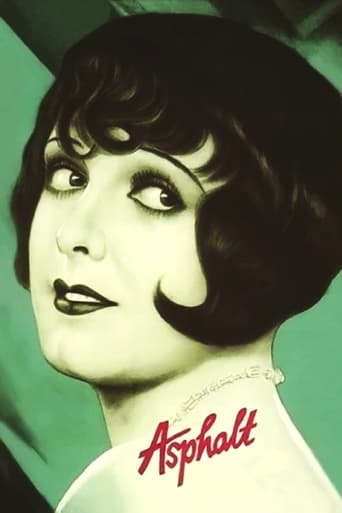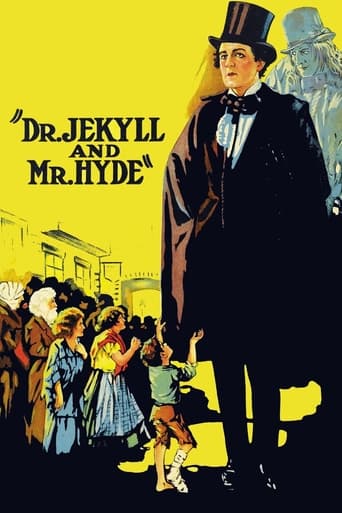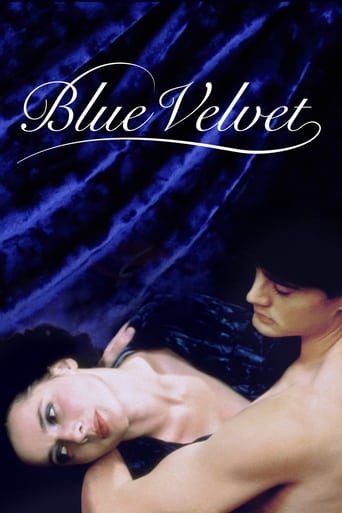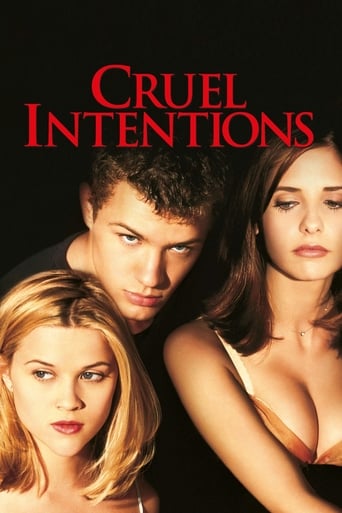

Asphalt (1929)
One of the last great German Expressionist films of the silent era, Joe May’s Asphalt is a love story set in the traffic-strewn Berlin of the late 1920s. Starring the delectable Betty Amann in her most famous leading role, Asphalt is a luxuriously produced UFA classic where tragic liaisons and fatal encounters are shaped alongside the constant roar of traffic.
Watch Trailer
Cast


Similar titles
Reviews
It's a good film all around, but it's most notable for finding yet another remarkable silent beauty queen, Betty Amann, who could perhaps have been a huge star if the era had continued. With her jet-black bob-cut, she'll remind many of Louise Brooks, but, aside from a similar hairdo, she's not much like Brooks. The story concerns a cop (Metropolis' Gustav Froehlich) who picks up Amann for stealing a diamond from a jewelry store. She tries to seduce him so he'll let her go, but he's so morally upright she basically has to jump on top of him to get what she wants. Froehlich walks away from the situation bewildered, but also kind of in love with her. She, too, develops feelings for the poor little innocent, but odds are against them. Especially when her gangster boyfriend shows back up. I wouldn't quite group this among the silent masterpieces, but it's a fine film. And Amann really is wonderful (she would go on to co-star in Hitchcock's The Rich and the Strange, and she also pops up in Nancy Drew... Reporter). I think it might be a bit better known if not for the lousy title. "Asphalt" only really refers to Froehlich's job as a traffic cop, but I don't see what else it has to do with the film.
From its elaborate and stylish opening scenes, Asphalt immediately establishes itself as a startling achievement. This unforgettable film is in many ways the perfect summation of German film-making in the silent era: a dazzling visual style, a psychological approach to its characters, and the ability to take a simple and essentially melodramatic story and turn it into something more complex and inherently cinematic. Although influenced by such classics as The Last Laugh and Berlin: Symphony of a Great City, Asphalt is a unique look at urban life and a classic in its own right.The plot in Asphalt is very simple: a woman caught trying to shoplift a diamond seduces the cop entrusted with bringing her to justice and the cop pays an very high cost for his lapse in judgment, but great films don't require elaborate plots to achieve their greatness. Betty Amann, the female lead who looks like a mash-up of Louise Brooks and Betty Boop, is sensuous and sultry but not cartoonishly so. In other words, she's no Theda Bara and thank goodness for that. Perhaps if she was a cult goddess like Brooks, Asphalt would be no different than the G.W. Pabst classic Pandora's Box. It is completely baffling why Amann never became a star. Amann is paired greatly with Gustav Fröhlich, who is remembered for his performance in Fritz Lang's classic Metropolis, you will be surprised at his range here. Emotionally naked, Fröhlich goes from anger to tenderness, and then to craven denial when faced with the consequences of a violent act.Asphalt is directed by Joe May, a leading German filmmaker of the 1910s and 1920s who is also known for the two-part epic The Indian Tomb. In addition, he helped to launch the career of Fritz Lang. Like Lang, May later relocated to Hollywood, where he directed several classic B-films, most notably The Invisible Man Returns. But Asphalt remains perhaps his most famous, and his greatest, work. However, May's handling of individual scenes is impressive. Reality is put in its place when location shots of the city are followed by a breathtaking Expressionist caricature of what we've just been shown, with the camera craning and tracking through throngs of extras and fleets of vehicles on UFA's enormous street set.As Dave Kehr from the New York Times said, "Asphalt reveals a filmmaker of astonishing technical skills and a distinctive visual style, based on a use of raked sets to create a sense of precariousness and claustrophobia." Brilliant!!!
Produced by Murnau, and brilliantly directed by May, this silent drama is a masterpiece of cinematography. From the opening montages, with workmen tamping down hot asphalt and the steamrollers behind them and the rain-wet streets shining in the street lights, to the traffic slanting across the street while the young policeman directs traffic, to the change in the lighting at his home after he feels he has fallenhe stands in shadow while down the hall in a halo of light his mother is busy in the kitchen, as if he were observing another worldto the expressionist shadows on the staircases toward the endit's magnificently conceived and photographed. The lighting effects are astonishing. The story is not profound, involving an upright young traffic policeman falling under the spell of a diamond-thieving courtesan (Bette Amman), and when they are surprised in her bedroom by her regular lover, an older diplomat, who hurls the woman to the ground, the young man defends her, and himself, with the result that the man dies. He goes home and tells his parents he has killed a man, and the father, also a policeman, stands up, puts on his dress helmet, and they go downtown. But the woman intervenes, calmly incriminating herself to save the young man. She is taken away to prison, but the young man says he will wait for her, and she looks at him with eyes brimming with tears, and a smile. Amman has impossibly big dark eyes and a helmet of bobbed, curly hair. Her cloche hats give her head a sculptural look, and she also moves sometimes with astonishing sensual power, as when she throws herself on the young policeman, winding her arms around his neck, her toes clinging to his boot-tops, her huge luminous eyes inches from his. In the early part of the film she is hard and manipulative, but at the end she has been shaken by real feeling and humanized. Okay, it's an old story, riddled with cliché, but in this treatment it works, largely because the film is so beautifully shot.
I wasn't familiar with the work of director Joe May - apart from THE INVISIBLE MAN RETURNS (1940) and the Silent epic THE Indian TOMB (1921), a film I was disappointed by and which I always considered more of a Fritz Lang film anyway - although I had always been intrigued by this one and, now, thanks to Eureka and "Masters Of Cinema", I've managed to catch up with it.From watching ASPHALT - followed, in short order, by SPIONE (1928) and TARTUFFE (1925) - I've reacquainted myself with the peerless craftsmanship of German cinema during the 1920s; indeed, May's film is technically quite irreproachable - particularly his depiction of city-life by night, but also the opening montage (echoing contemporaneous Russian cinema) which forms part of the title sequence. Apart from this, the film's slight but compelling plot later became a staple of the noir genre where a naïve man is embroiled in the sordid life of a femme fatale with tragic consequences (the most obvious example, ironically enough, being perhaps Fritz Lang's superlative THE WOMAN IN THE WINDOW [1944]).In this regard, the film benefits greatly from the perfect casting of the two roles but especially the captivating Betty Amann, who effortlessly exudes sexuality throughout: distracting the elderly owner of the jewel shop with her considerable charms, while casually concealing one of the precious rocks in the tip of her umbrella; seducing the young, inexperienced traffic cop by excusing herself from his presence but, when he follows her into the bedroom, finds she has slipped under the sheets and is waiting for him; when he tries to leave, she literally leaps on him and, by wrapping herself around his waist, making it practically impossible for him not to give in to her. Also notable is a brief pickpocketing scene at the beginning featuring Hans Albers; the rather violent fight between the boy and the girl's elderly associate/lover, when the latter comes back to her apartment and catches them in flagrante, in which the furniture (conveniently held by visible wires) gets literally thrown around the room; the concluding act, then, marked by a number of twists (which lead to a sort of happy ending more akin to Bresson's spiritually-infused PICKPOCKET [1959] than the hard-boiled noirs it inspired), is enormously satisfying.












